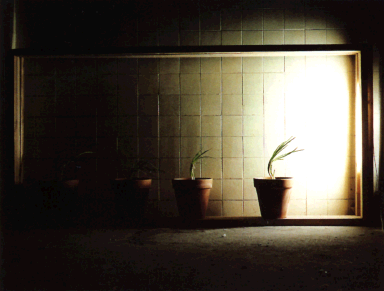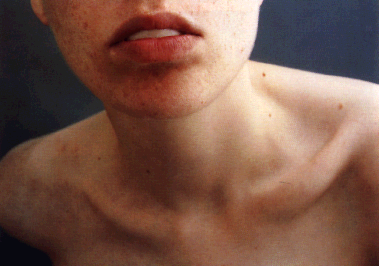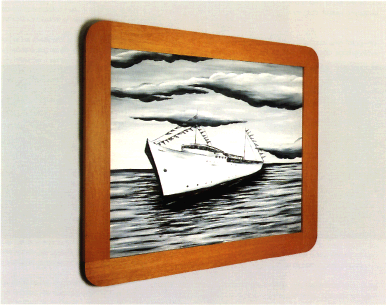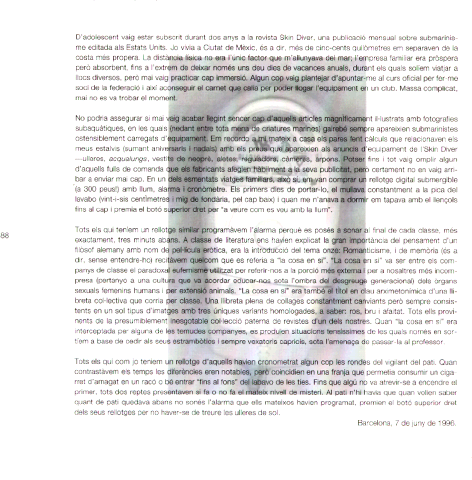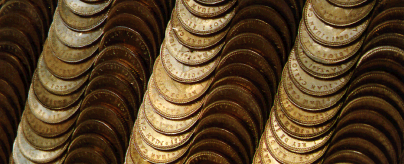Parades en el buit
This exhibition is a joint initiative between the City Council and the Faculty of Fine Arts of Barcelona to raise an area of reflection based on the current work of a group of former students who have opened creative directions that are full of interest, silent and still little known in the city. Review the situation in perspective of creators trained in the Barcelona Faculty - in the case of having followed some of them whom we already believed, as well as having incorporated them from others whom we knew less, has meant sharing his most decisive moment of freedom. Not the initial moment to roll under the effect of the dynamics initiated in Fine Arts, but the later moment of settlement alone, in which they outline more defined, broken and consistent positions, where the trace of learning affects, in any case, the background attitudes and the ways of coping with the creative event with the capacity to develop sufficiently personal and self-demanding discourses.
The look is, obviously, limited and partial in light of its clarity: the situation of confluence of some artists who work in the slowdown has been focused, to extract positive signals in a lost territory that affects the relationship with things , images and expressions. The artists gathered in this exhibition have been particularly unpublished since they left the Faculty of Fine Arts - between two and seven years - and are not prolific in work, based on a self imposed restriction. From this vital attitude, one aspect is common to all of them, that of entering a stage of critical and complex convictions, which are manifested in the folds, fissures, in the invisible places of language, such as Awareness of an outside that experiences emptiness, as a resonance of an "non-enthusiasm" ethics in response to a disfigured, hidden context that is not allowed to penetrate or perceive clearly, in which they are superimposed without possible cohesion and in which they learn to recognize themselves by capturing circumstances, investigating latent states.
A territory of subtle displacements between what we see and what is being proposed to us would define the visual qualities of most of these works. The substrata of backgrounds contain a voluntary deepening of dilemmas more than in assertions, to construct dissuasive, divagating situations, that indicate the non-pretension of being affirmative, of the difficulty or inconvenience of << expressing >>, guiding better to critical approaches to the referred subjects, or not only to them, to the reason of being of their presence, that in general refers us to the same act of art and when looking at it.
In this attempt to understand the movement of things, more than what they are, there is an exploration of the same mechanisms of art, on how the work emerges, where it is located, how we receive it and how it affects or is deposited again in reality. They move in a subtle and tense circuit of dissolution in and out, elaborating presences of denial, drifting of almost no-say, of the non-designation frontal, mirrors of language within the interior desert, remote links with the forms of art , after having made a great jump off.
Consequently, the limits of the art are forced, the influence of collateral, devalued, impassioned, and deprived creation spaces is influenced, and the importance of the borders of the relative emerges, of what is and is imposed by itself as ambiguous and at the same time unprotected, that goes into the interstices and assumes the paradoxical states of these insinuations, of these suspensions, dispersed, illusory, devoid of essence, little presence.
By putting into suspension what we believe to know about ourselves and the world, but continuously discussing with him and with the blurred reflexes that he gives us, Maria Cusachs proposes an expansion of the path of vision to reflect on that inaccurate but substantial turning zone that there is between what we are and what we seem to be, in the dysfunction between how the world acts in us and us in him. Concise, sensitive decipherings, made in the absolute transparency, such as learning to discover, to resume, in the saturation of appearance, the distance that separates us from the secrets of the recognizable world.
The blindness that invades us, the widespread inability to look, to "hold" the look at things, and to go further when necessary, has caused this gallery of blind people, created by Cori Mercadé. When moving to the painting ten images of blind people of a former ophthalmology treaty, a complex circuit of loss of legibility is triggered, from derivations to new and unproved anthropological-historical adherences. The blind, despite their frontality, become incommunicado spectra. The artist elaborates huge circuits in the copied processes, contributing to a refolding of the referents towards an outcrop of the own opacities and paradoxes contained in the alleged iconic veracity.
Re-versioning intranscendent images, extracted from everyday trivial iconographies, serves Gemma Clofent to make a very conscious sense of the drift of vision: with them he builds picturesque fictional furniture that is offered as great impenetrability scenarios. Decoding the same identification of the artistic means with which it helps and, by dissolving them in each other, causes camouflages that end up bringing confusion and drowsiness to a seemingly innocuous and conventional imagery. Striking strings of vision, where fuzzy, opaque, disapproved spaces for figuration are installed, which contain their double, their possible substitute, as a sum of mirrors of vision.
Roc Parés works on the poetic collapse of the orthodoxies of technological media, focusing entirely on the questioning territory about "what" and "how" we see. Faced with the apparition, it goes into the silent, imperceptible contours that contain from the demolition of time and the dispossession of meaning, until the point of faint neutralization emerges, a new silent maze from which to spread Disturbing waves, warm passages of absurdity that do not intend to define, reveal, inform or elucidate anything more than their being called to be revised presence, support of multiple indeterminations.
A fresh laboratory of almost imperceptible transformative operations characterizes the work of Antonio Ortega. In its concise and clear statements we often see life that hides death. He confronts life processes by introducing anomalies, distortions, and elementary restrictions as a way of poetic dialogue with his subliminal and negative factors. The fragile temporal thread, the naturalness given to the contingency of the behaviors, the dialectic of the limitation (of the non-being) within the being and the contrary turned into lucid discharge, propel a turnaround what things are, a return to the Origin and its fabulous potential for otherness. Or maybe also a sweet call to intranscendence.
The uncontrolled, libertarian, lateral representation spaces make up the sculptural situations of the residual scenarios, the iconography of apunttal and tension that makes possible the construction of a visual world and which points to the "place" of art from outside As a way to move the fervent nature of fiction to those other spaces reserved for inexpression. Recovery of the expression in the deadlock, in the depersonalized zone. The arrival of a happy breathing in the blinded field and the restoration of meaning in the unexclosed appendages. Understand abandonment as an exaltation.
The powerful principle of dissolution contained in the work of Francesc Ruiz helps to reflect on the absurdity of the vision. Corporeal configurations that retain germinal memory, atomistic, infinitesimal, of all solid mass, get ready to "be" in this inconsistent and vibrational circumstance, emulating the deceptive construction unit systems of certain current games. Create thus membrane architectures, bordering friction, a narrow border where traps and interferences of every order are stacked in relation to the virtual inner life they contain and the threatening external life they deploy, as a result of the watch states that develop in its perimeter. Statism and fluidity, beating and extinction, coexist in an unstable network of fluctuations.



